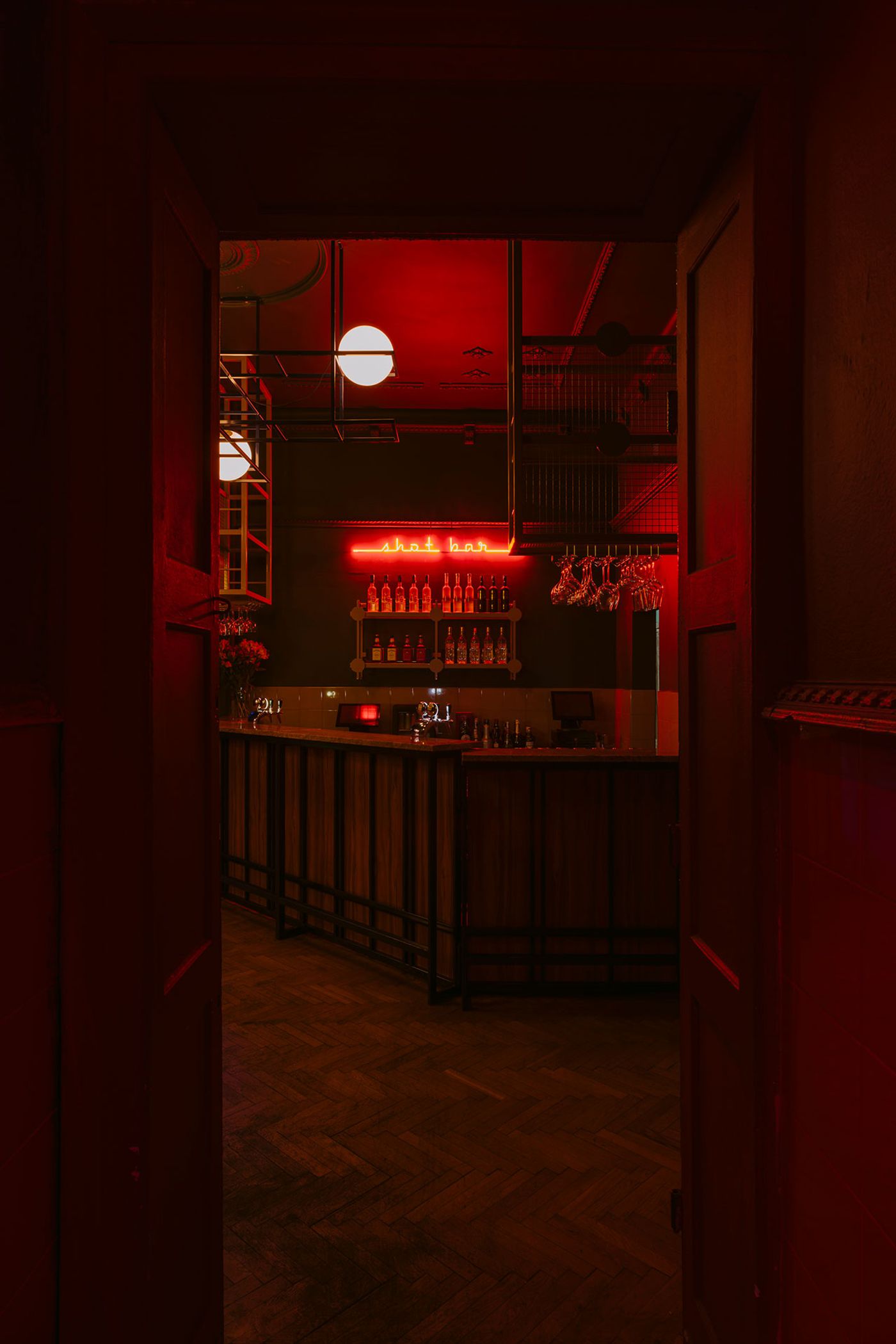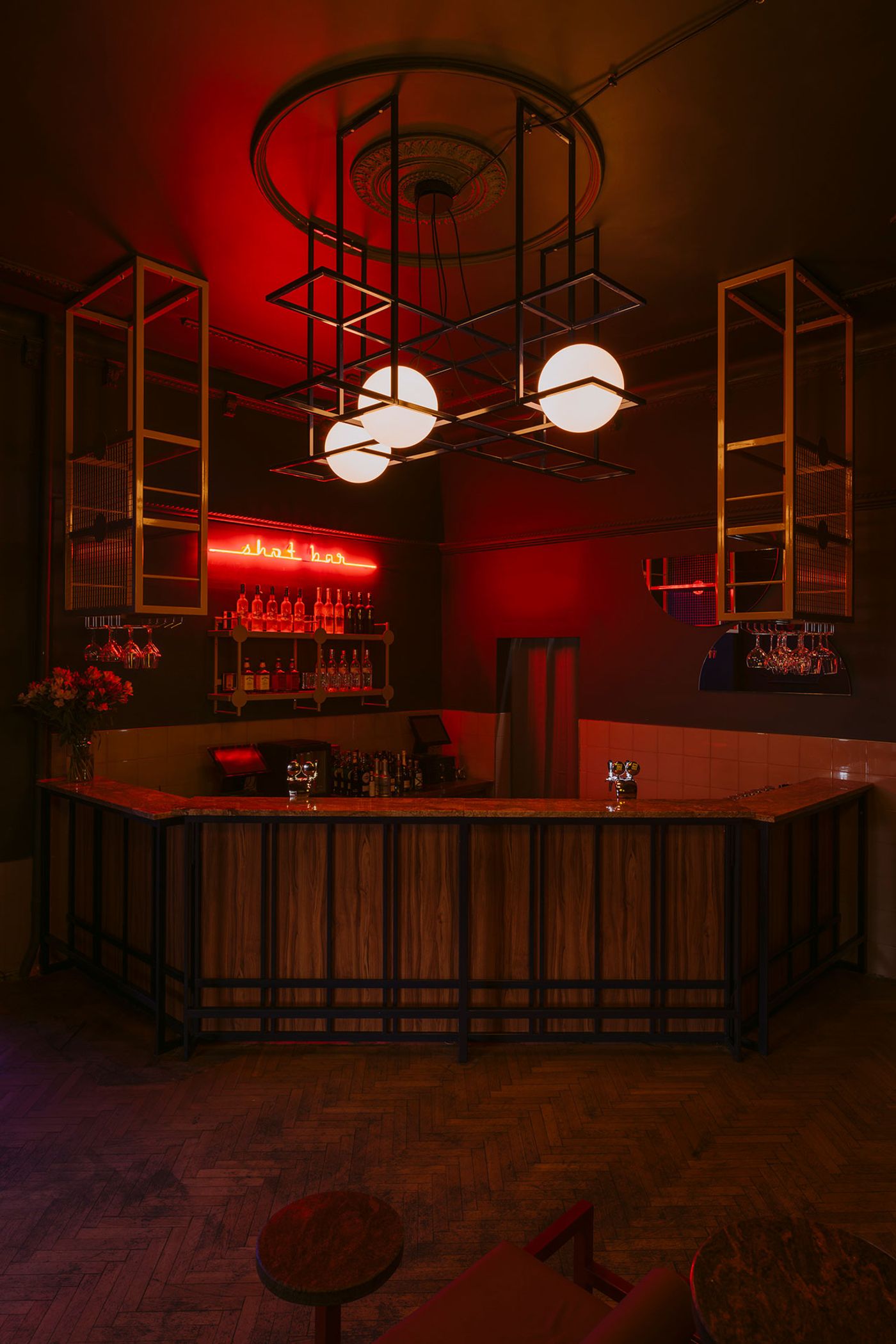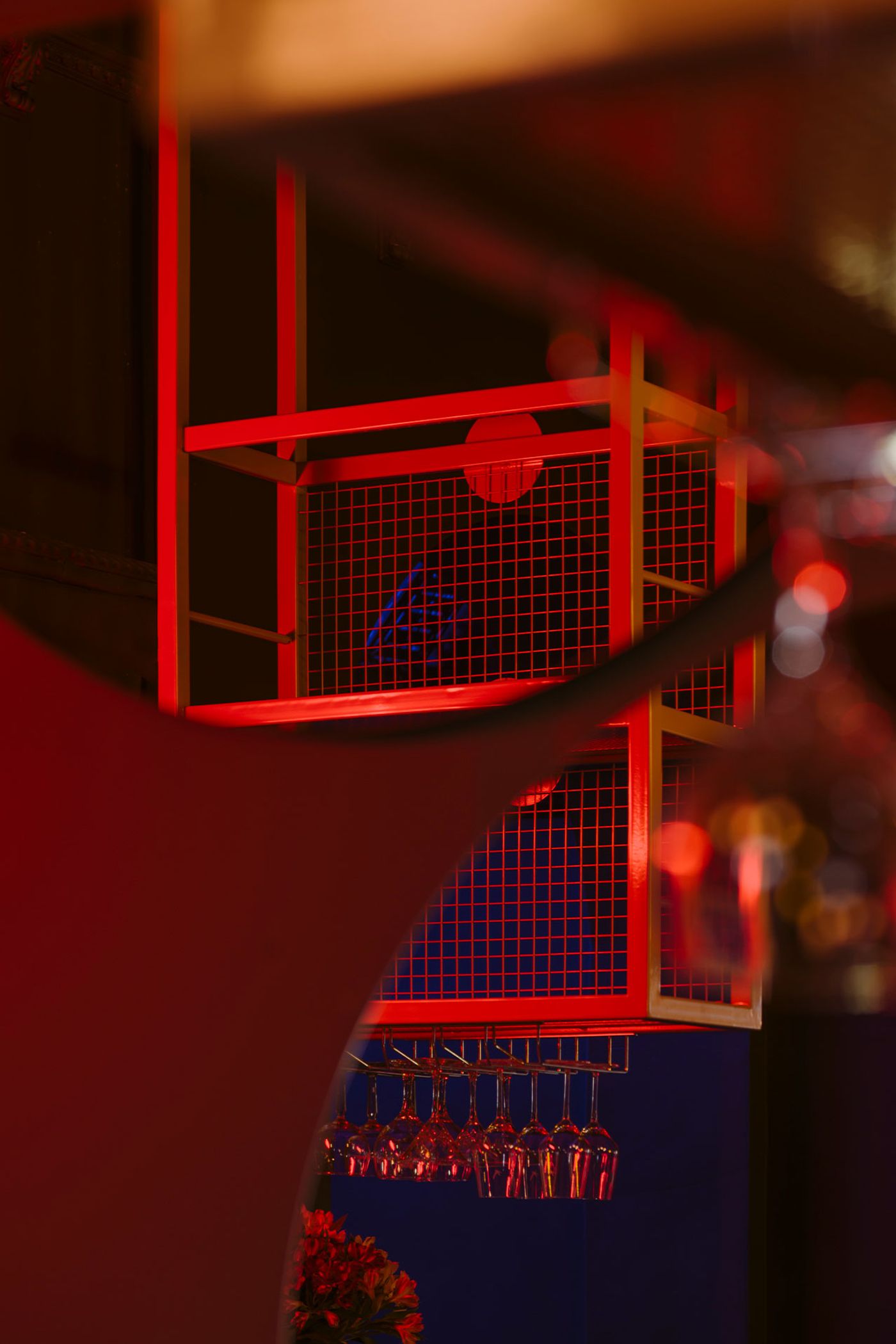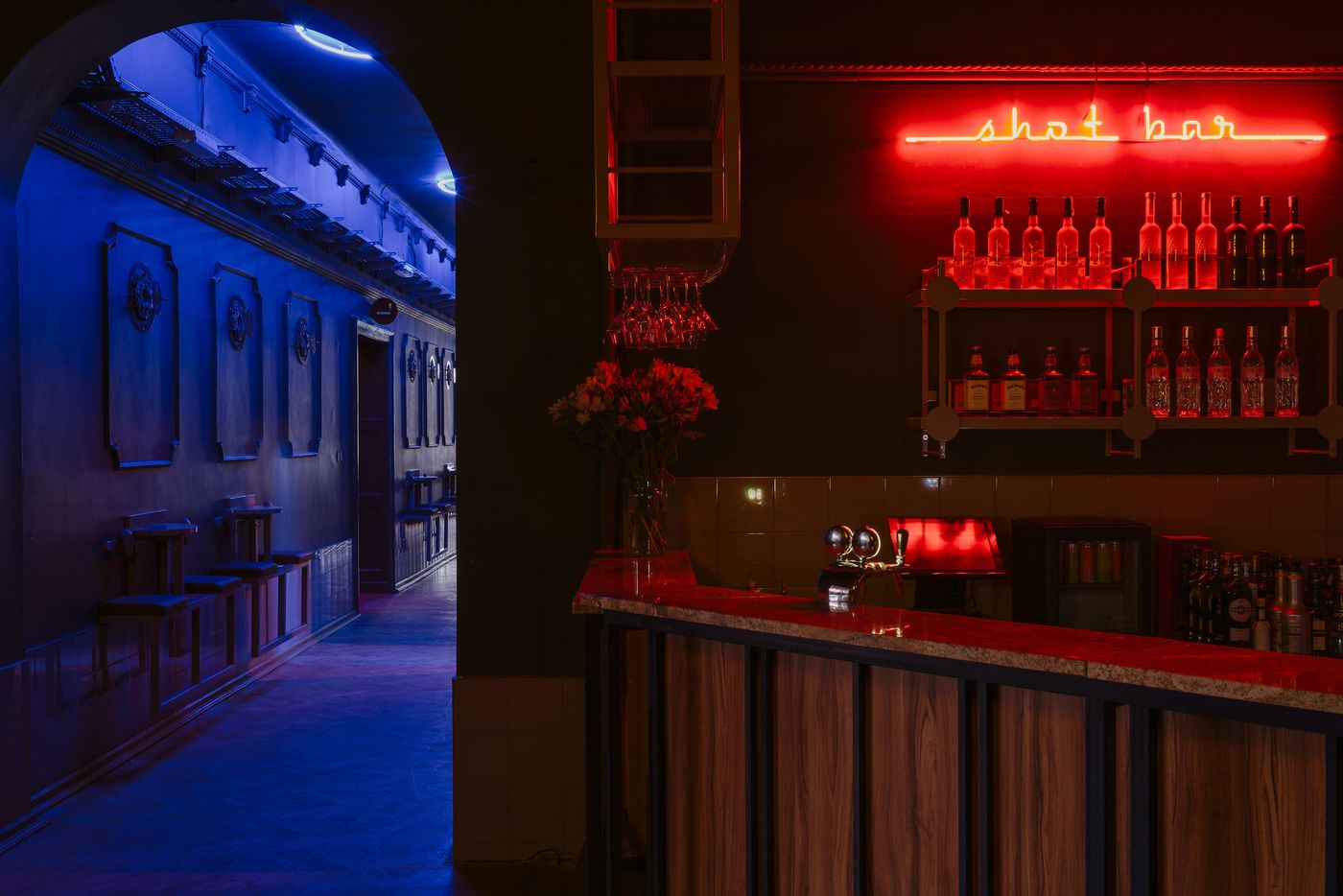
Próżność Club: Wiercinski Studio Reanimates a Listed Building in Poznan with Neon Pizzazz
Words by Yatzer
Location
Poznań, Poland
Próżność Club: Wiercinski Studio Reanimates a Listed Building in Poznan with Neon Pizzazz
Words by Yatzer
Poznań, Poland
Poznań, Poland
Location
Housed in a large 1930s building in the centre of Poznan, Poland, Próżność Klub immerses guests into a mystifying, seductive environment full of nostalgic elegance, neon colours and electronic music. Local architect Adam Wiercinski of Wiercinski Studio has refurbished the listed building’s interwar interior, boldly pairing its classical flourishes with graphical neon lighting and playful, 1980s-inspired furniture while imbuing the venue with an underground vibe.
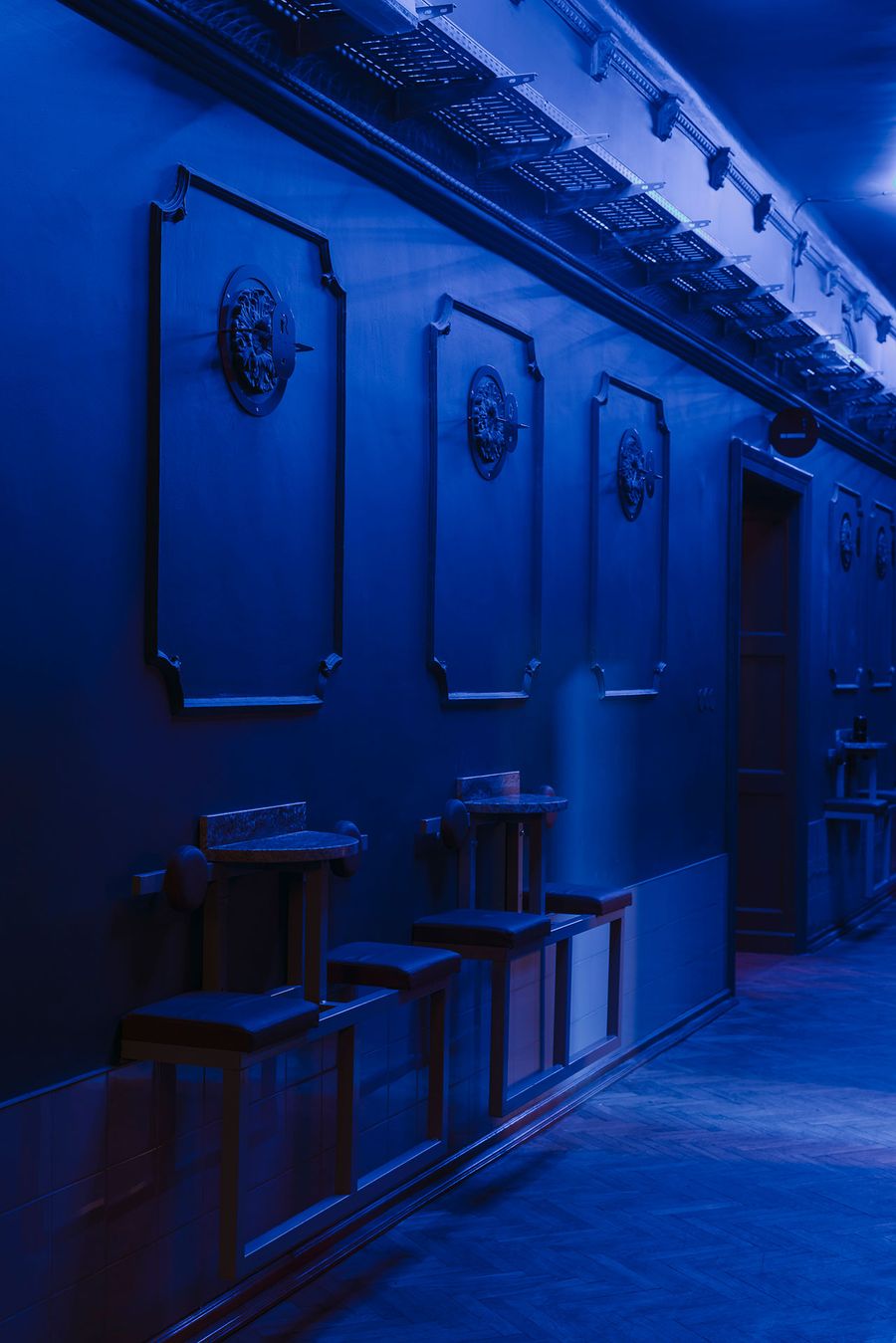
Próżność (eng. "Vanity") Club by wiercinski-studio in Poznan, Poland.
Photo © PION Studio (Basia Kuligowska, Przemyslaw Nieciecki).
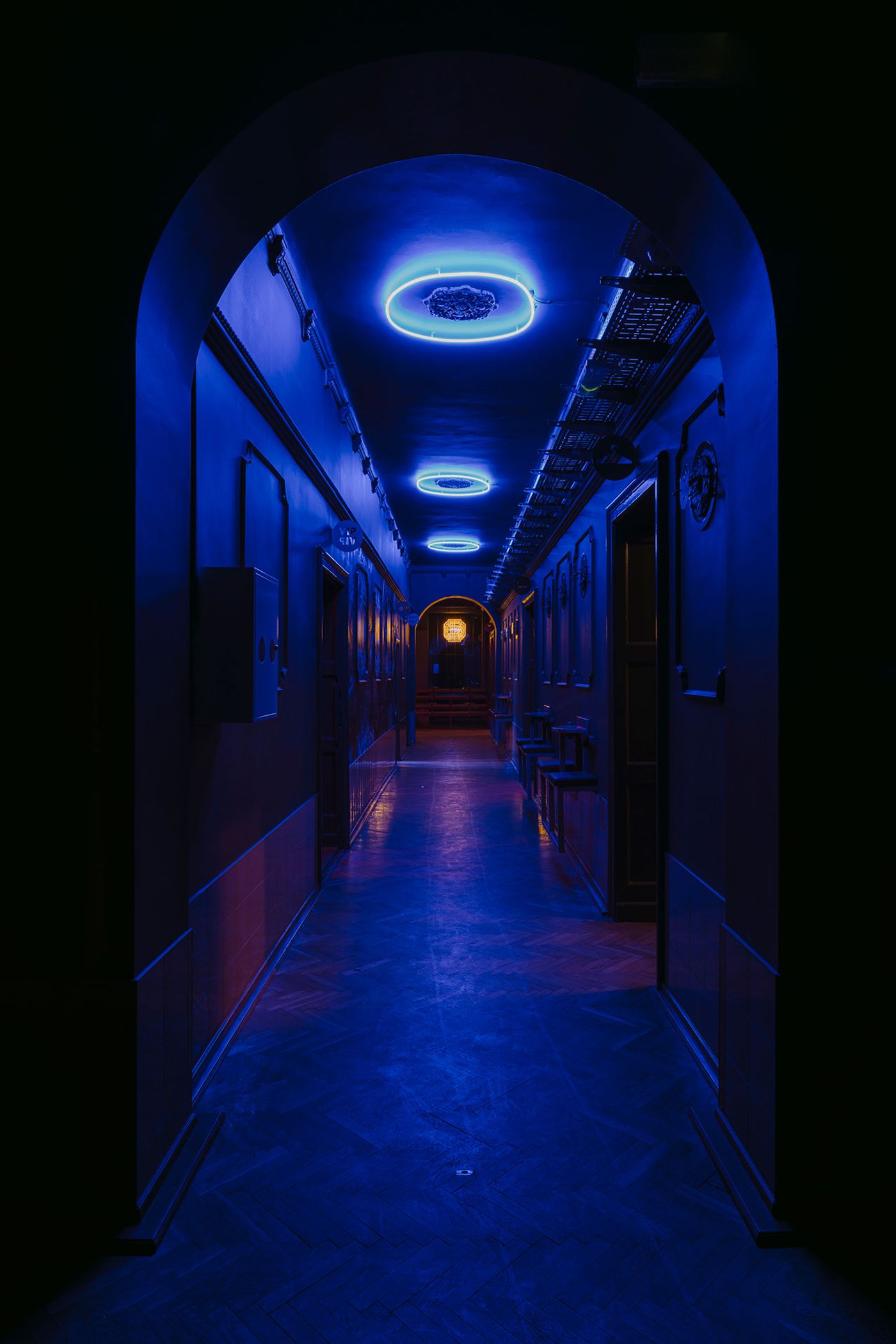
Próżność (eng. "Vanity") Club by wiercinski-studio in Poznan, Poland.
Photo © PION Studio (Basia Kuligowska, Przemyslaw Nieciecki).
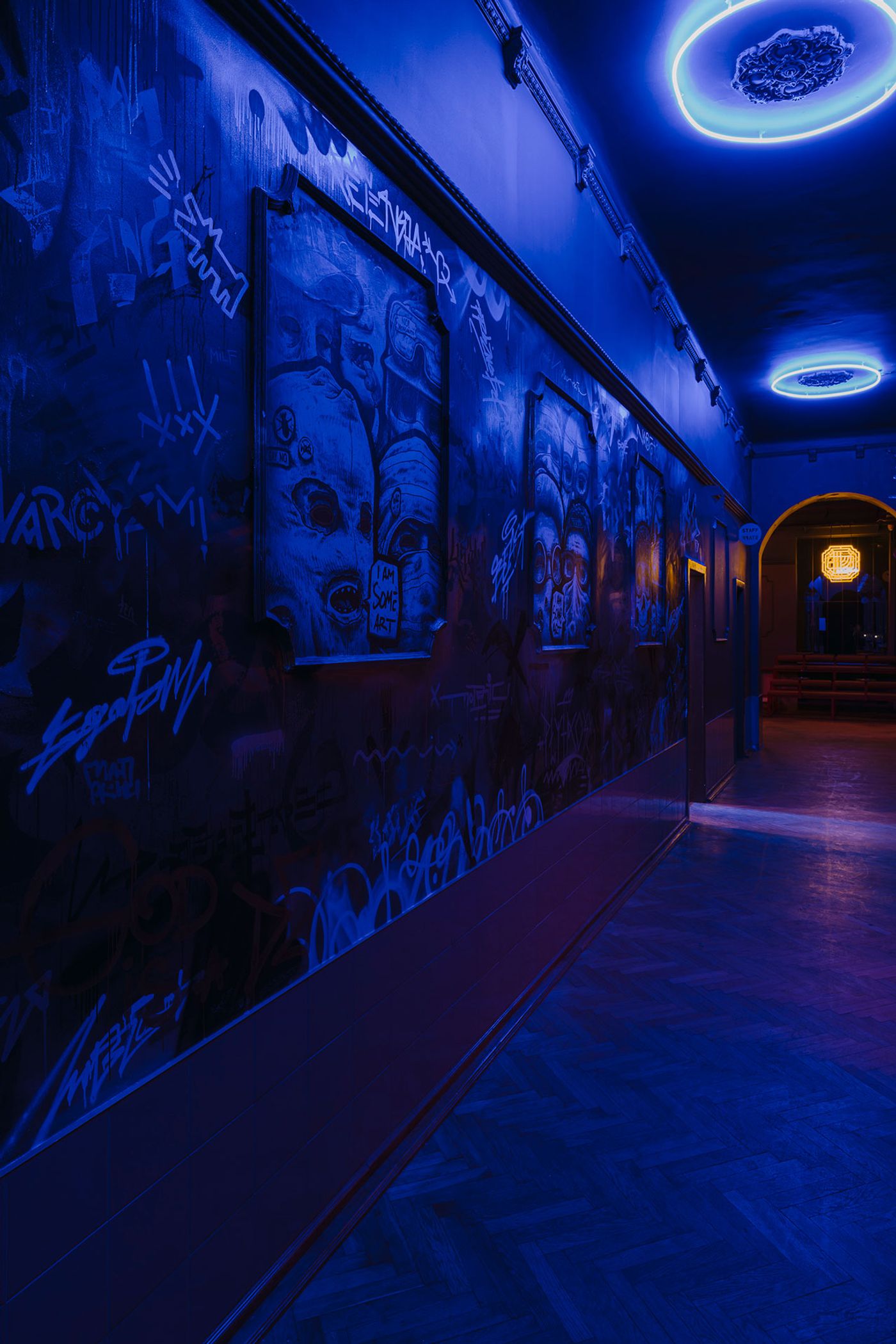
Próżność (eng. "Vanity") Club by wiercinski-studio in Poznan, Poland.
Photo © PION Studio (Basia Kuligowska, Przemyslaw Nieciecki).
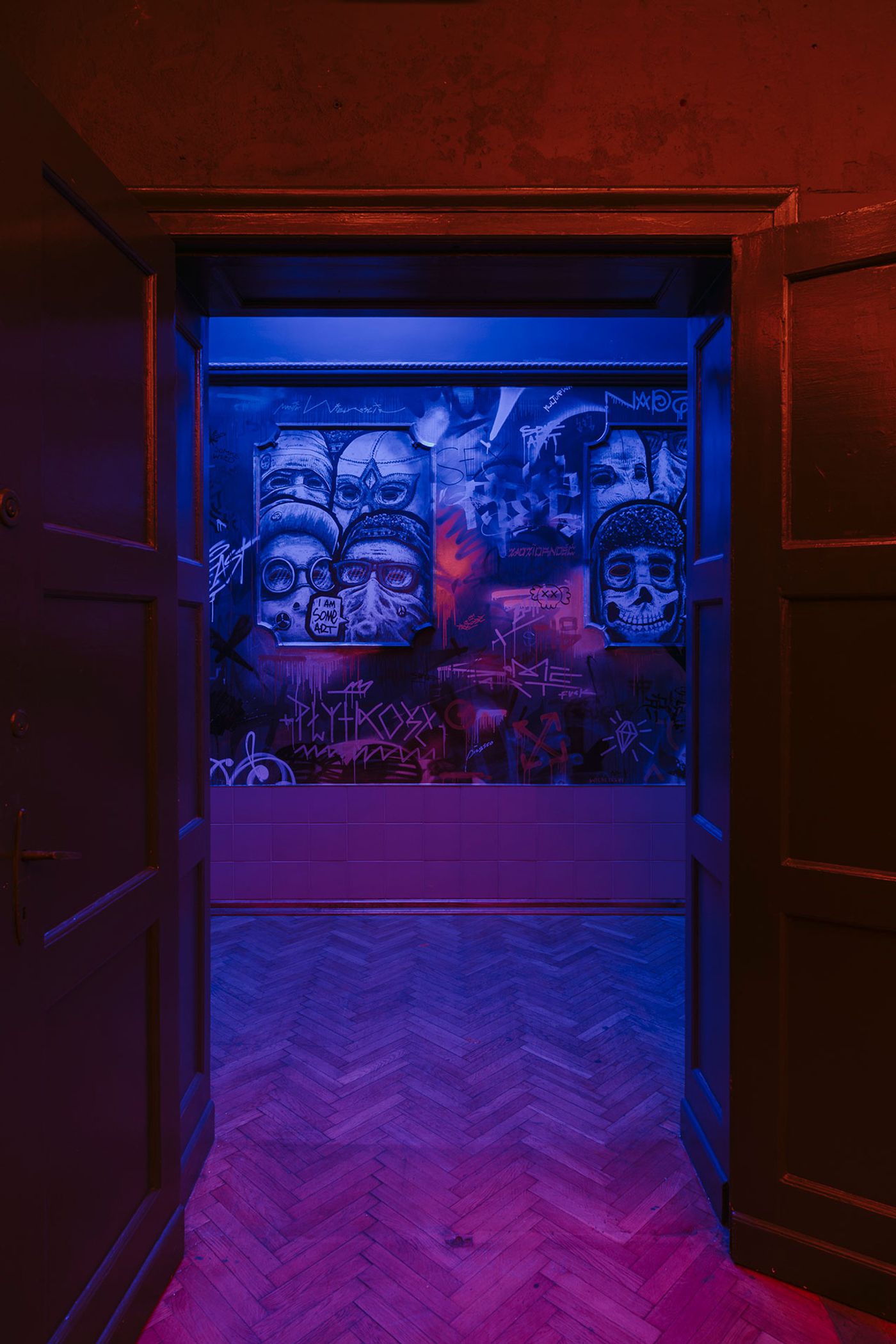
Próżność (eng. "Vanity") Club by wiercinski-studio in Poznan, Poland.
Photo © PION Studio (Basia Kuligowska, Przemyslaw Nieciecki).
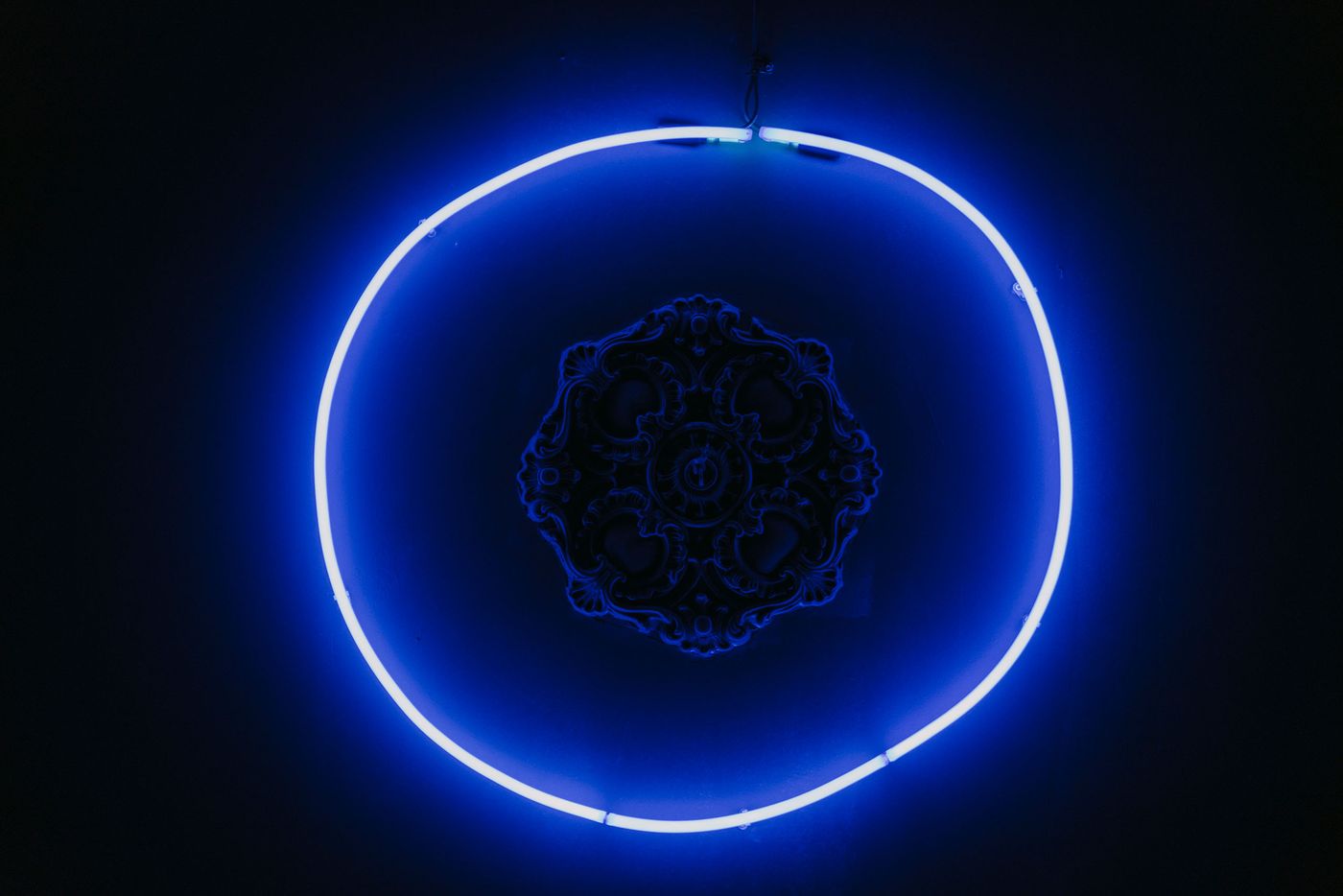
Próżność (eng. "Vanity") Club by wiercinski-studio in Poznan, Poland.
Photo © PION Studio (Basia Kuligowska, Przemyslaw Nieciecki).
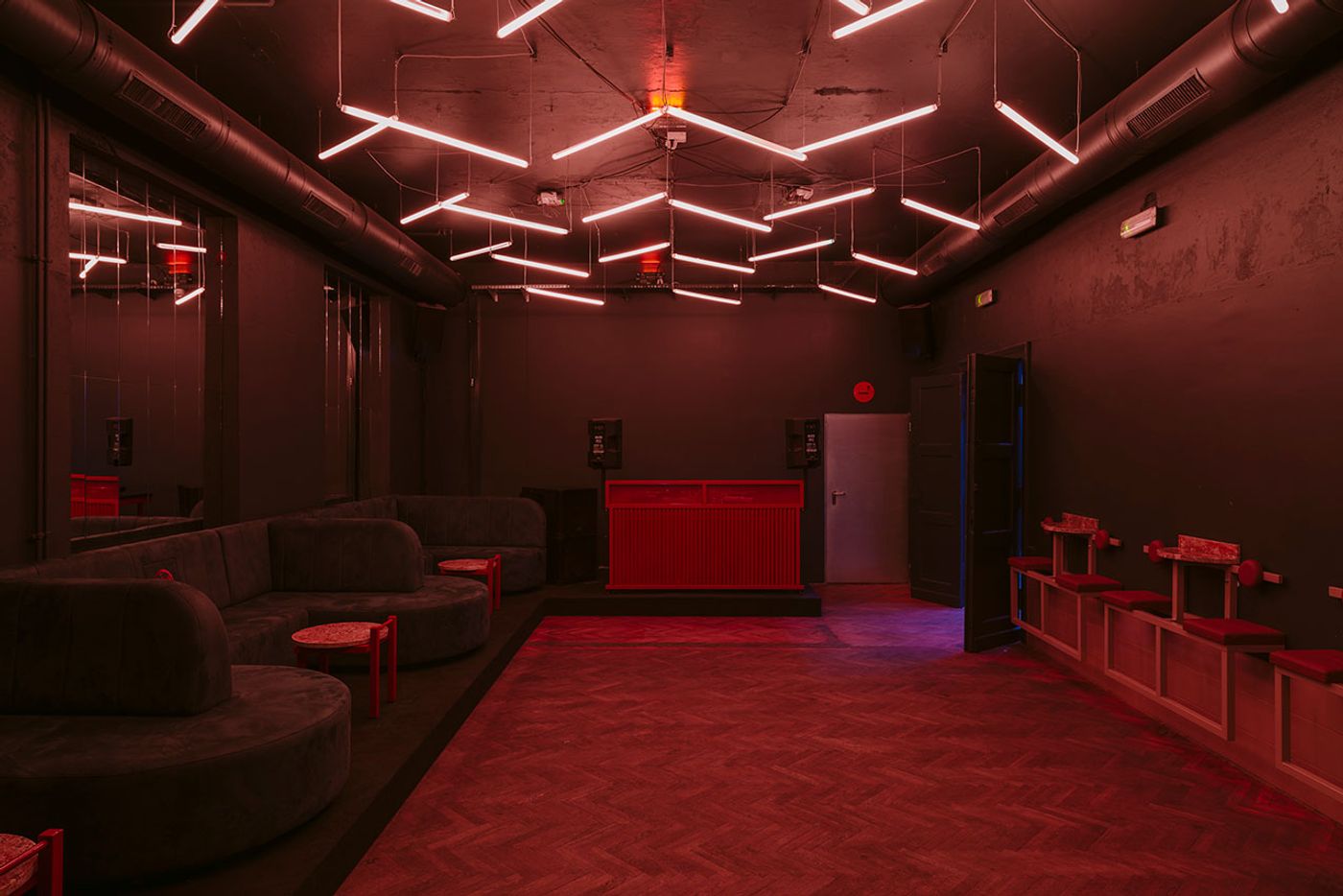
Próżność (eng. "Vanity") Club by wiercinski-studio in Poznan, Poland.
Photo © PION Studio (Basia Kuligowska, Przemyslaw Nieciecki).
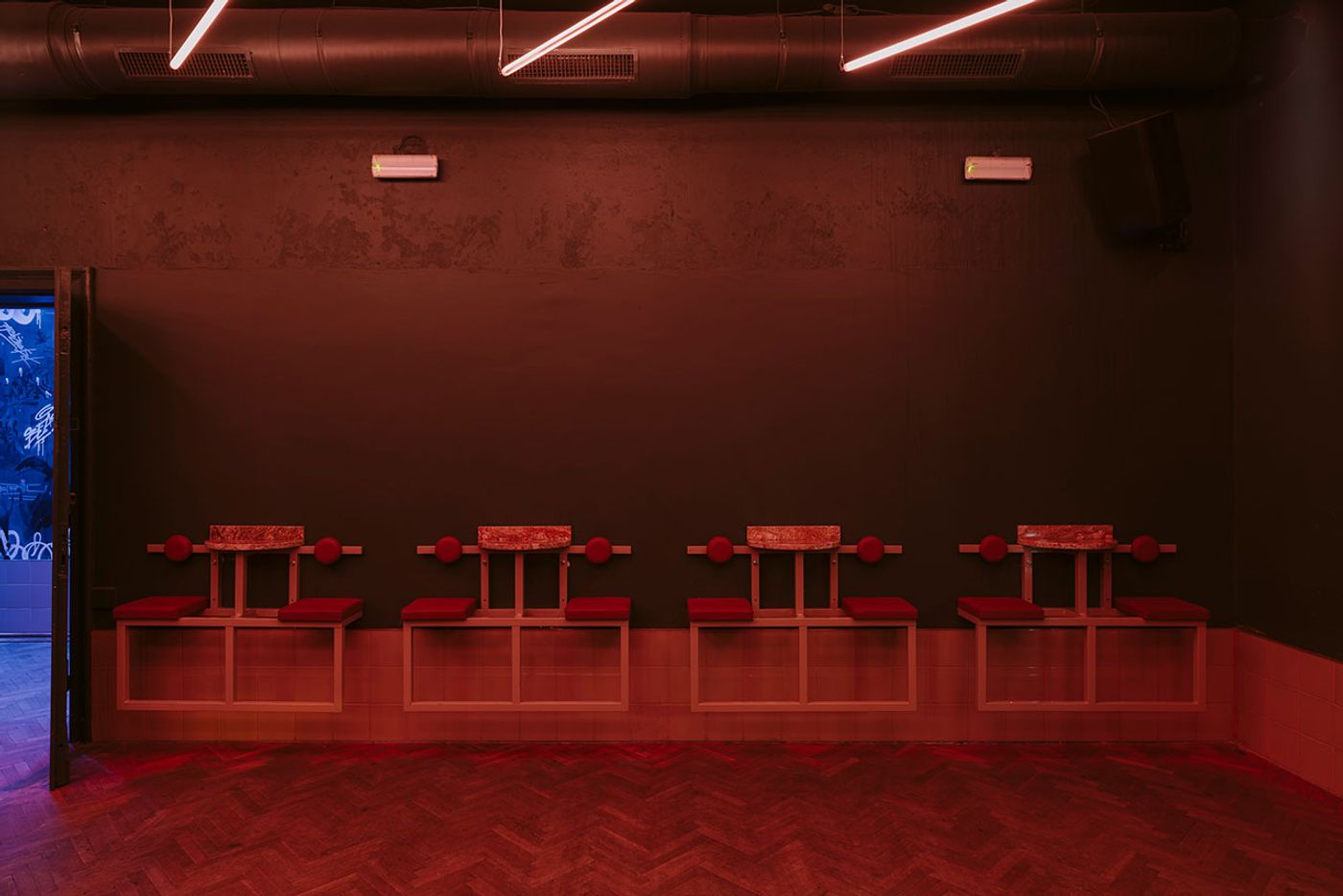
Próżność (eng. "Vanity") Club by wiercinski-studio in Poznan, Poland.
Photo © PION Studio (Basia Kuligowska, Przemyslaw Nieciecki).
Informed by the building’s status as a listed monument, Wiercinski’s interior design is underpinned by a desire to retain its original décor as much as possible in terms of features such as the herringbone parquet flooring through to the wall moldings, plaster cornices and ceiling roses, while imbuing the spaces with a subversive ambience of underground edginess. To that end, most windows have been replaced by mirrors (they’ve also been soundproofed), walls and ceilings have been painted a navy blue, and air ducts and electrical trays have been left exposed. Moreover, whenever a partition wall has been removed to accommodate the new configuration, the markings have been left exposed as evidence of the building’s original state.Swathed in blue and red neon lights, the classical elegance of the refurbished interior feels whimsically modern, a sensation enhanced by the playful geometrical forms of the custom-made furniture and light fittings. Made by local craftspeople, the pieces that Wiercinski’s studio has designed are imbued with the zany sensibility of the 1980s Memphis Group. Featuring a palette of grey beige, ruby red and cobalt blue, they combine a geometric steel-frame construction with marble or granite finishes.
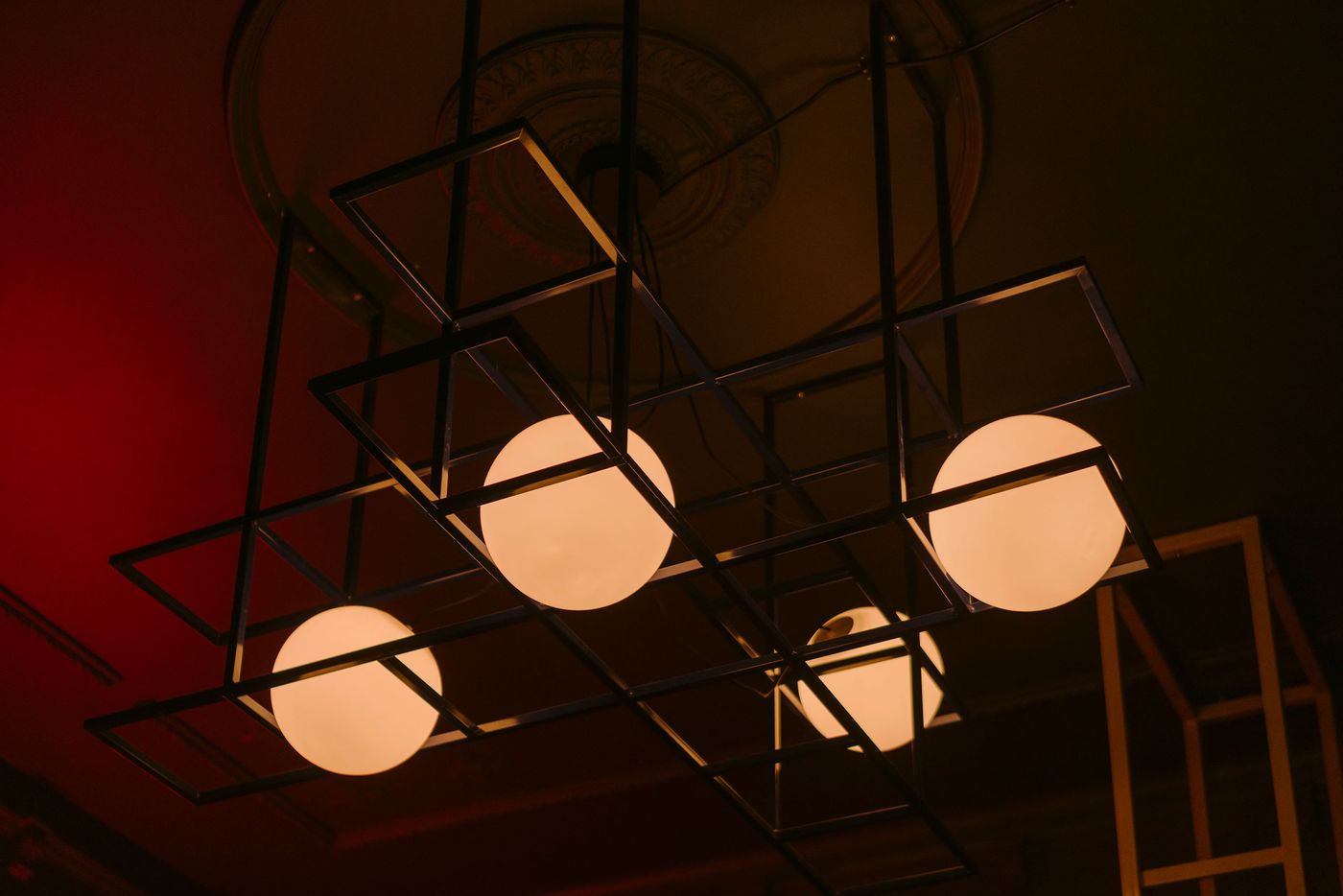
Próżność (eng. "Vanity") Club by wiercinski-studio in Poznan, Poland.
Photo © PION Studio (Basia Kuligowska, Przemyslaw Nieciecki).
A long corridor featuring neon rings that frame the decorative ceiling roses and wall-hung bar stools and table sets connects the cloakroom, lavatories, VIP room, cocktail room and shot bar, through which you access the main dance floor. The cocktail room, the only space with natural lighting, is dominated by a ring-shaped, steel-framed and granite-top common table above which hangs an antique glass chandelier, whereas the adjacent small dance hall is swathed in red fluorescence courtesy of a matrix of light tubes on the ceiling that echo the herringbone pattern of the parquet floor below. In the shot bar, a bespoke geometric chandelier picks up the steel-framed construction of the club’s custom-made furniture while a grandstand at the end of the long corridor allows patrons to observe those entering the club.
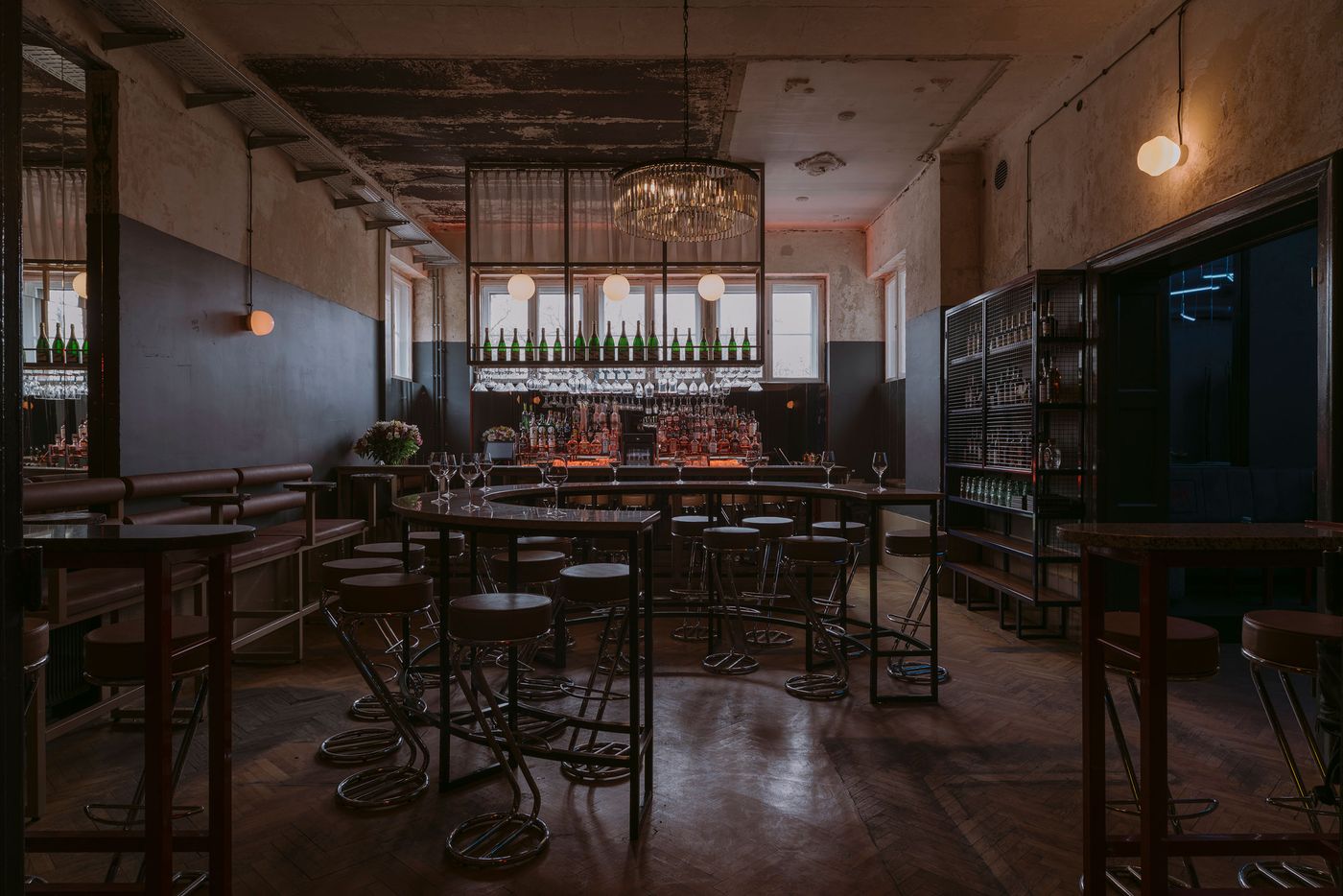
Próżność (eng. "Vanity") Club by wiercinski-studio in Poznan, Poland.
Photo © PION Studio (Basia Kuligowska, Przemyslaw Nieciecki).
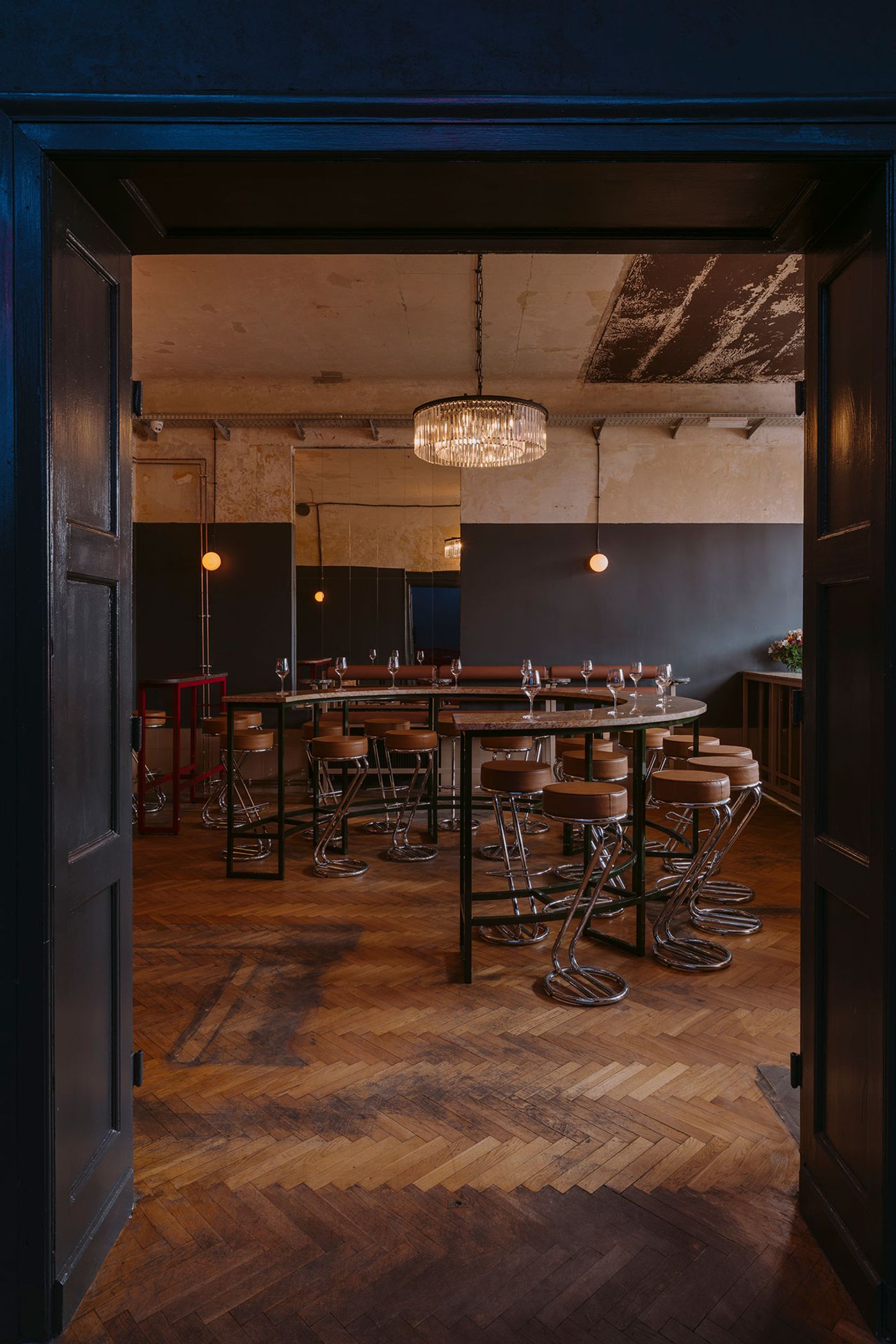
Próżność (eng. "Vanity") Club by wiercinski-studio in Poznan, Poland.
Photo © PION Studio (Basia Kuligowska, Przemyslaw Nieciecki).

Próżność (eng. "Vanity") Club by wiercinski-studio in Poznan, Poland.
Photo © PION Studio (Basia Kuligowska, Przemyslaw Nieciecki).

Próżność (eng. "Vanity") Club by wiercinski-studio in Poznan, Poland.
Photo © PION Studio (Basia Kuligowska, Przemyslaw Nieciecki).
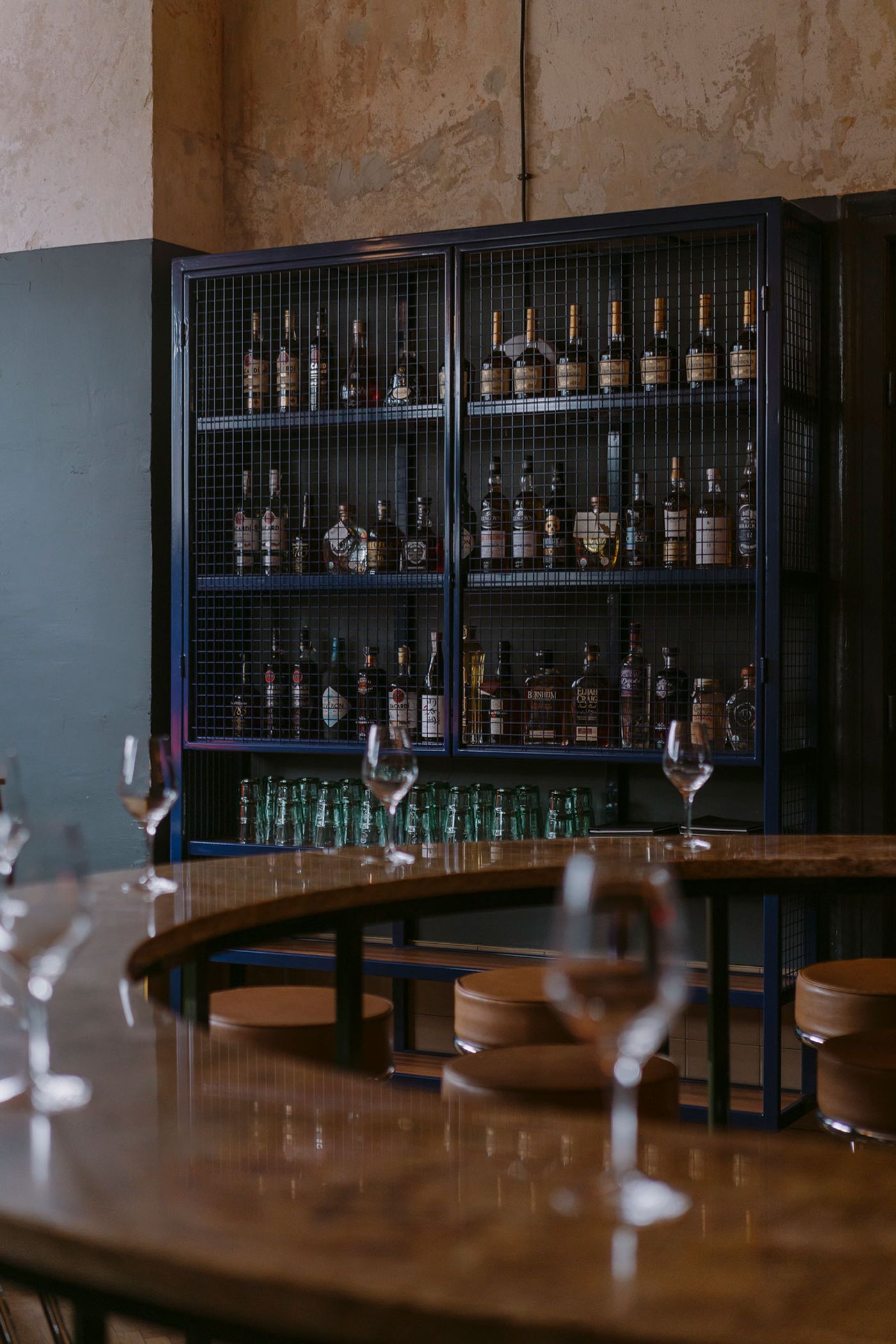
Próżność (eng. "Vanity") Club by wiercinski-studio in Poznan, Poland.
Photo © PION Studio (Basia Kuligowska, Przemyslaw Nieciecki).
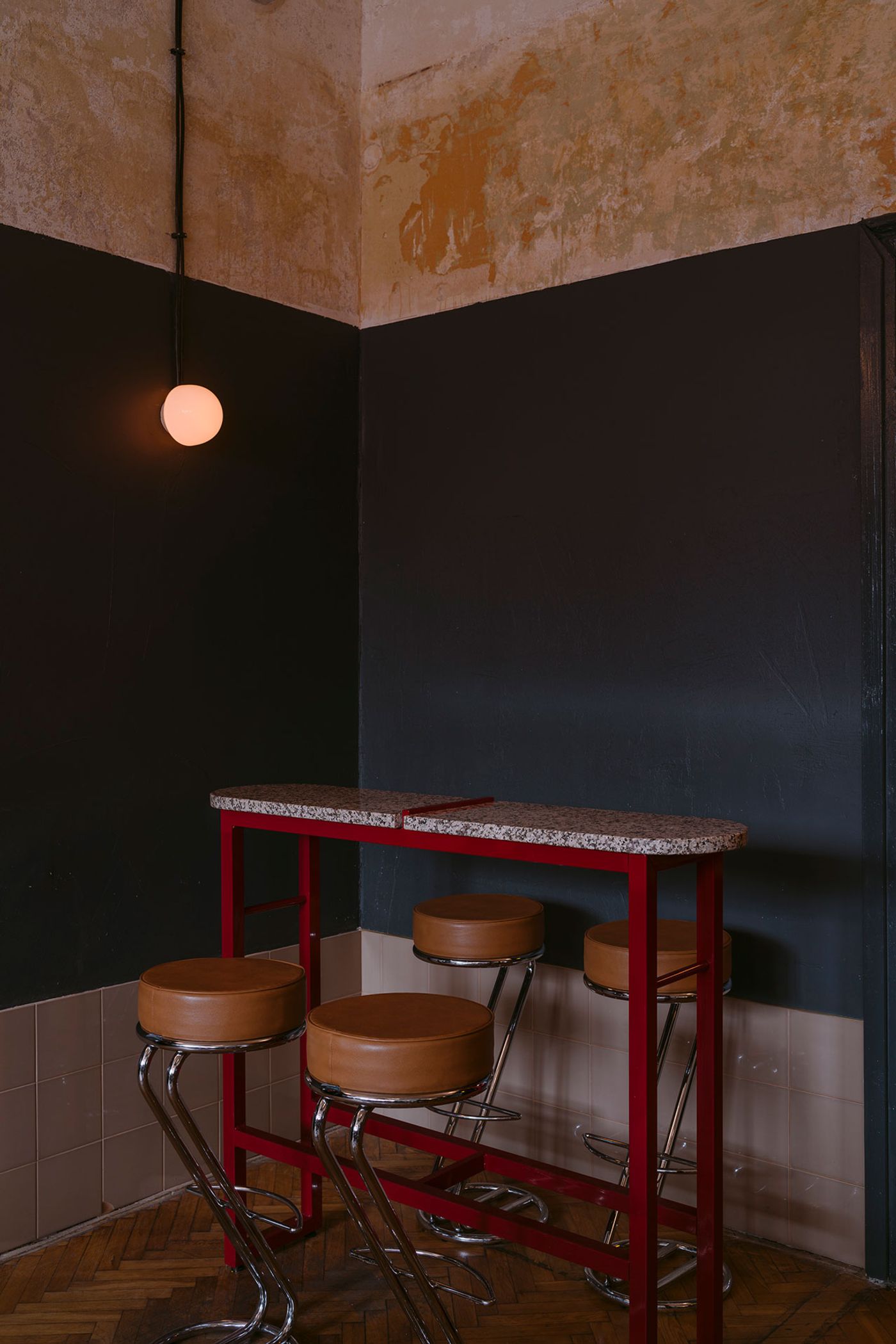
Próżność (eng. "Vanity") Club by wiercinski-studio in Poznan, Poland.
Photo © PION Studio (Basia Kuligowska, Przemyslaw Nieciecki).
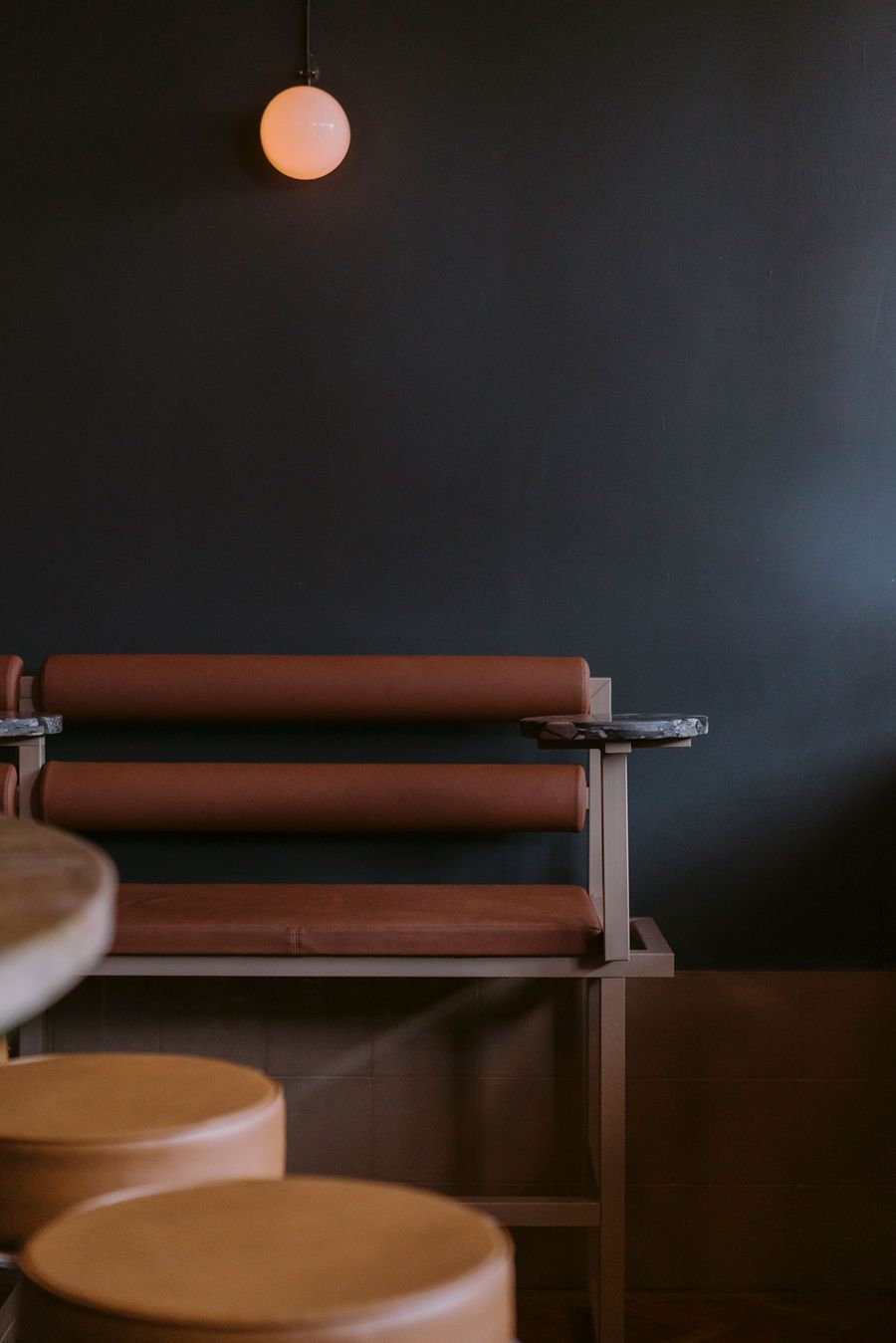
Próżność (eng. "Vanity") Club by wiercinski-studio in Poznan, Poland.
Photo © PION Studio (Basia Kuligowska, Przemyslaw Nieciecki).
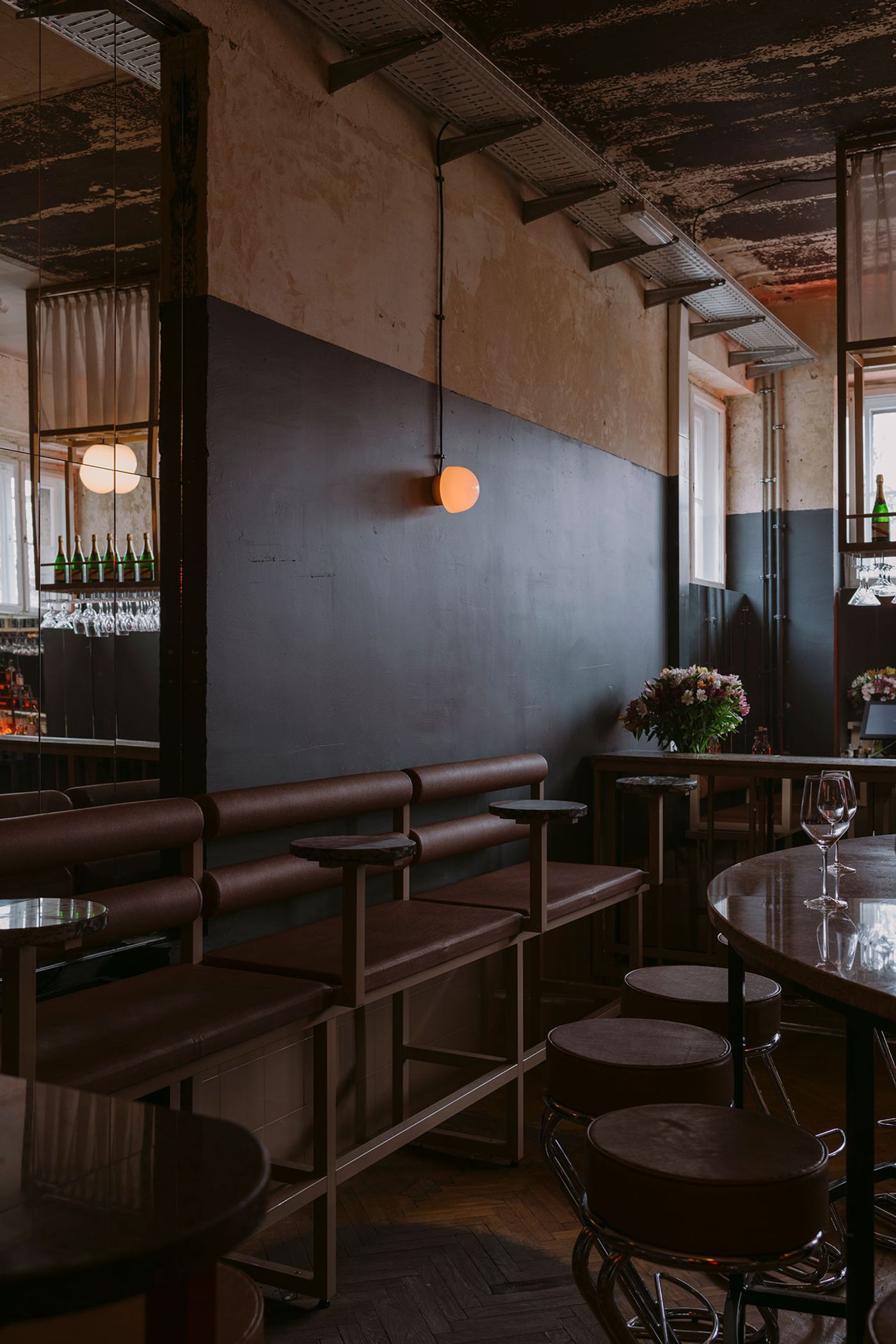
Próżność (eng. "Vanity") Club by wiercinski-studio in Poznan, Poland.
Photo © PION Studio (Basia Kuligowska, Przemyslaw Nieciecki).
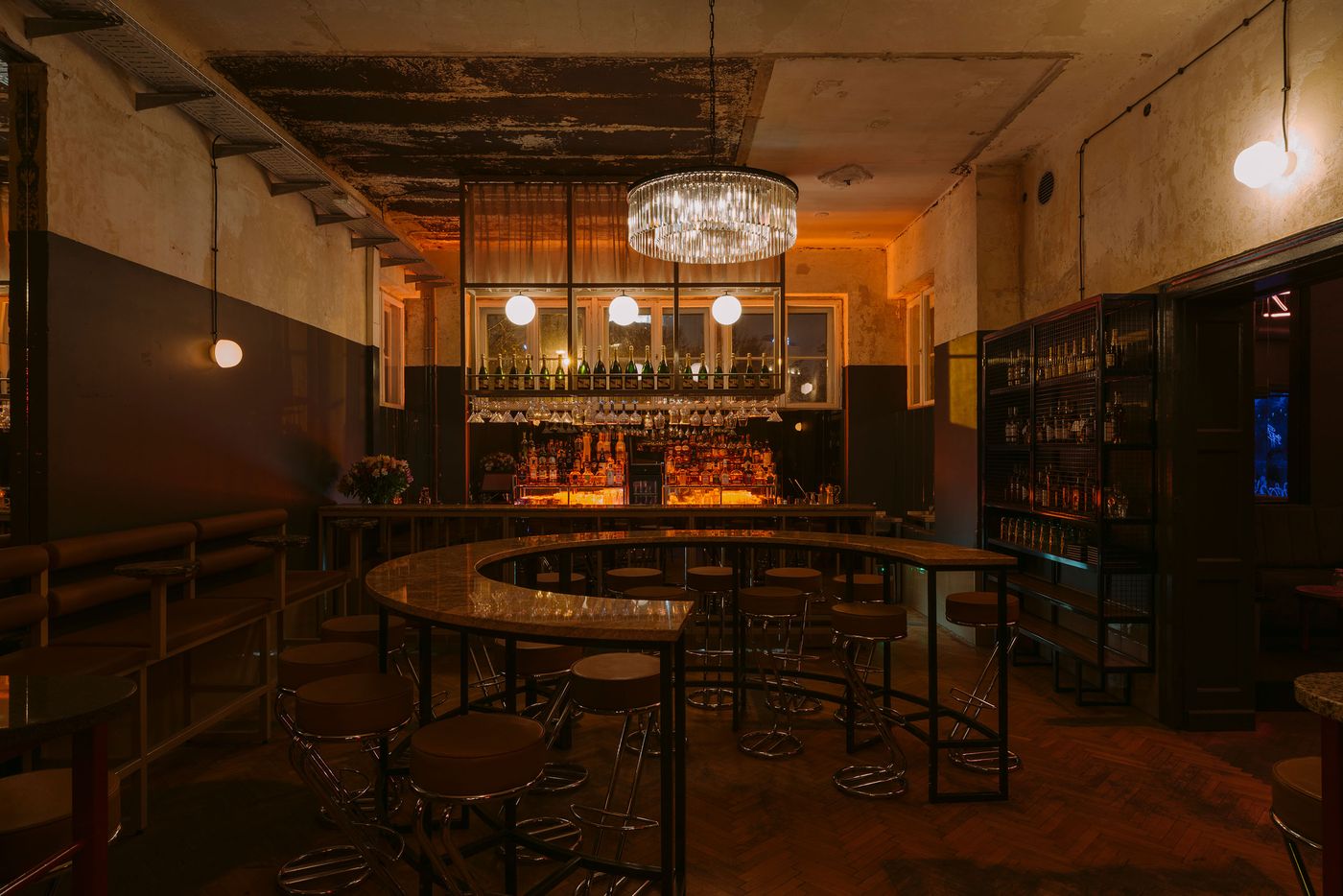
Próżność (eng. "Vanity") Club by wiercinski-studio in Poznan, Poland.
Photo © PION Studio (Basia Kuligowska, Przemyslaw Nieciecki).
Wiercinski’s distinct design language is in full force in the 130 square-metre main dance hall: large mirrored windows reflect the light from the original brass chandeliers which have been restored and programmed to respond to the sounds of the music being played, colourful ceramic tiles in lieu of wall panelling playfully complement the refurbished parquet floors and decorative plasterwork, while a steel-framed 6-metre long bar, topped by a granite counter, seductively glimmers. Above the DJ’s station, a clock in blue neon is frozen at five to midnight, a whimsical reminder that it’s always party time at Próżność Klub.
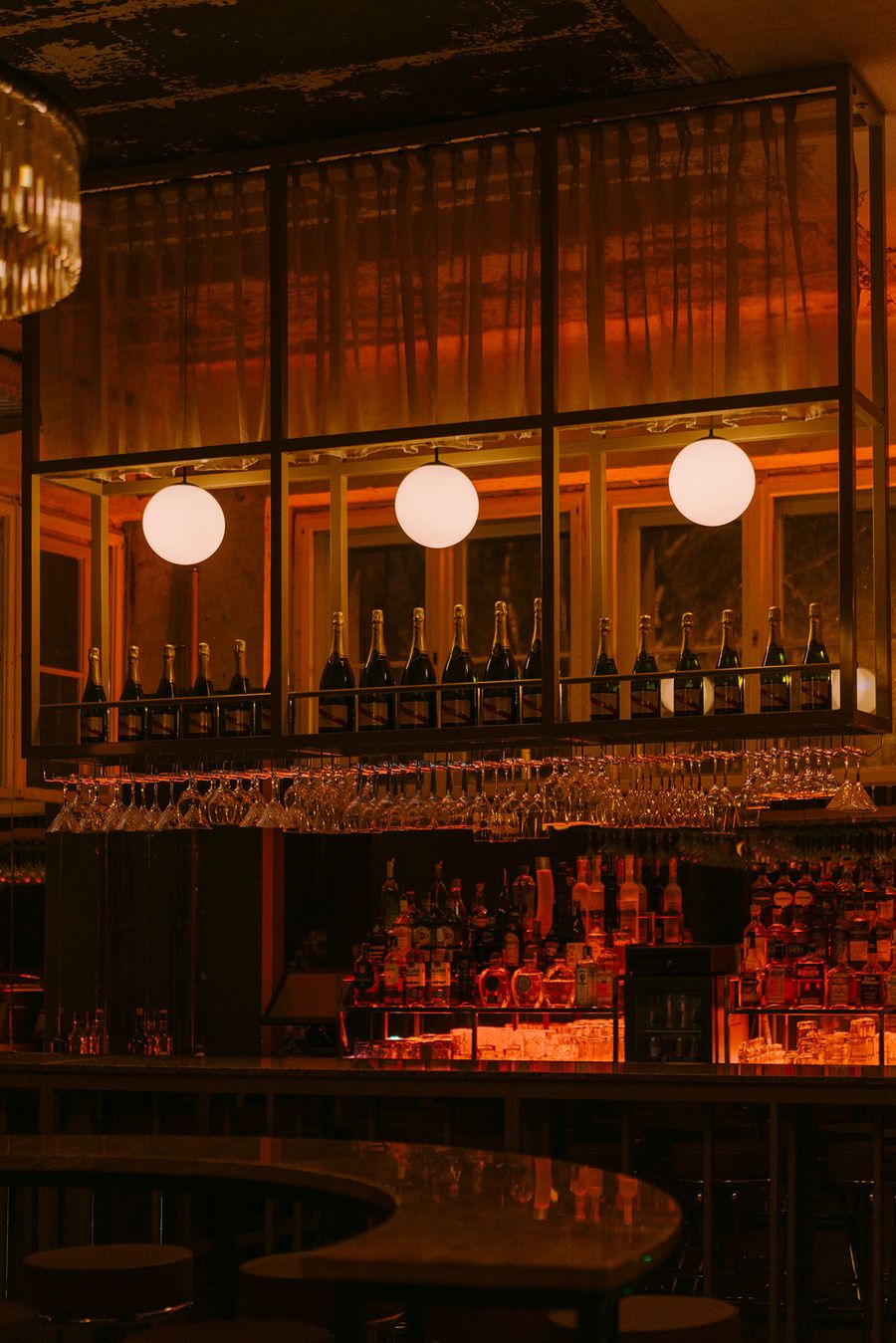
Próżność (eng. "Vanity") Club by wiercinski-studio in Poznan, Poland.
Photo © PION Studio (Basia Kuligowska, Przemyslaw Nieciecki).
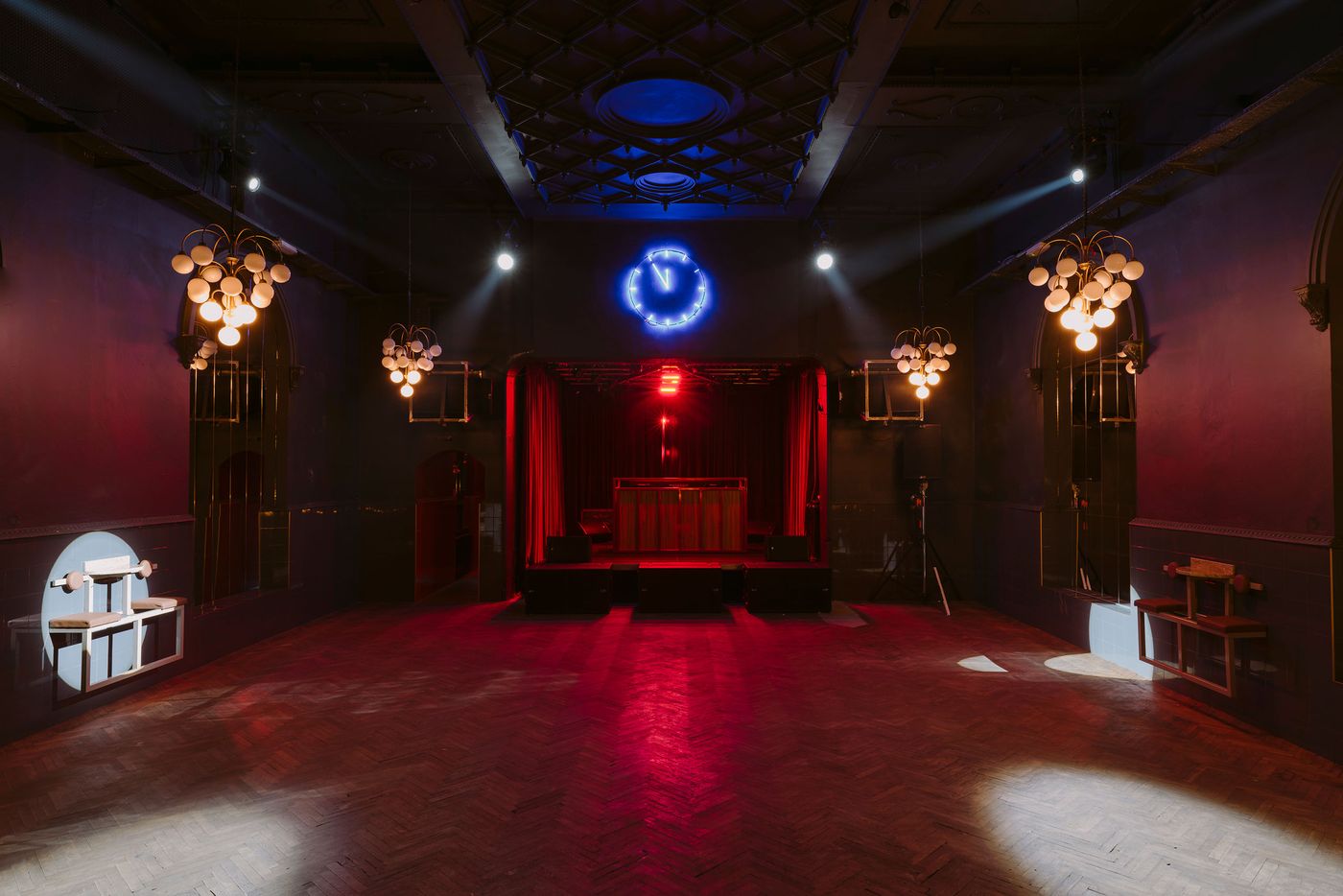
Próżność (eng. "Vanity") Club by wiercinski-studio in Poznan, Poland.
Photo © PION Studio (Basia Kuligowska, Przemyslaw Nieciecki).
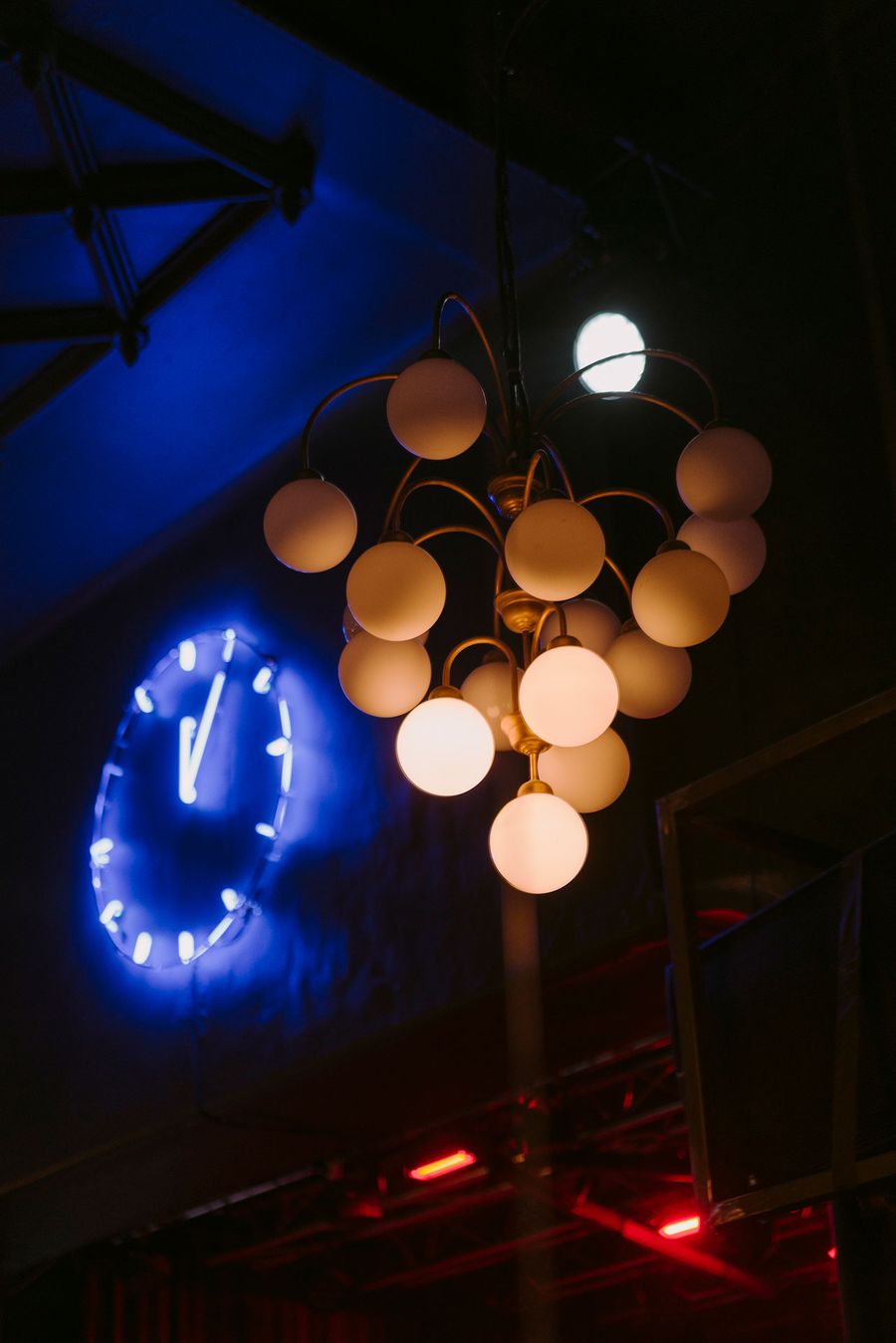
Próżność (eng. "Vanity") Club by wiercinski-studio in Poznan, Poland.
Photo © PION Studio (Basia Kuligowska, Przemyslaw Nieciecki).

Próżność (eng. "Vanity") Club by wiercinski-studio in Poznan, Poland.
Photo © PION Studio (Basia Kuligowska, Przemyslaw Nieciecki).
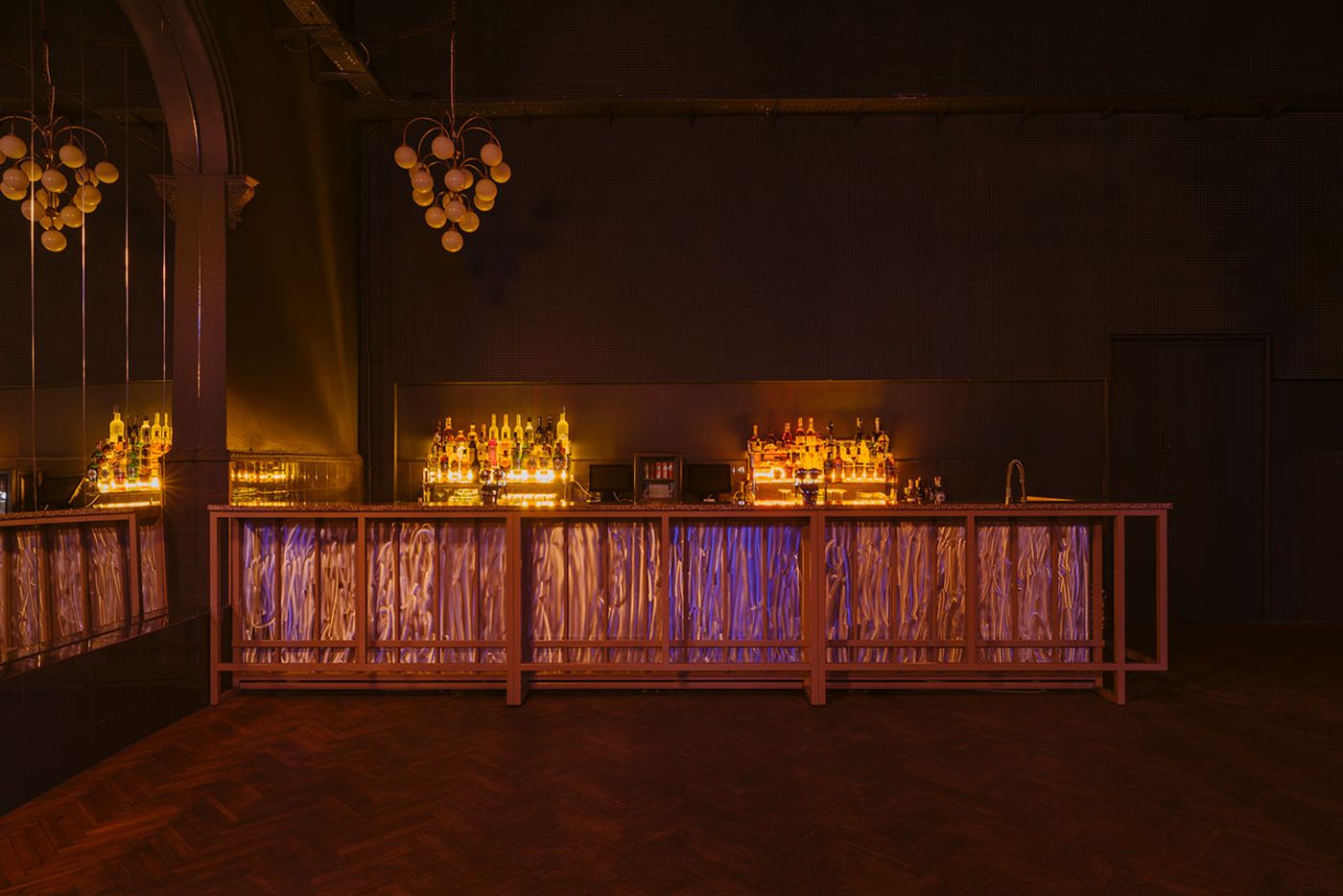
Próżność (eng. "Vanity") Club by wiercinski-studio in Poznan, Poland.
Photo © PION Studio (Basia Kuligowska, Przemyslaw Nieciecki).
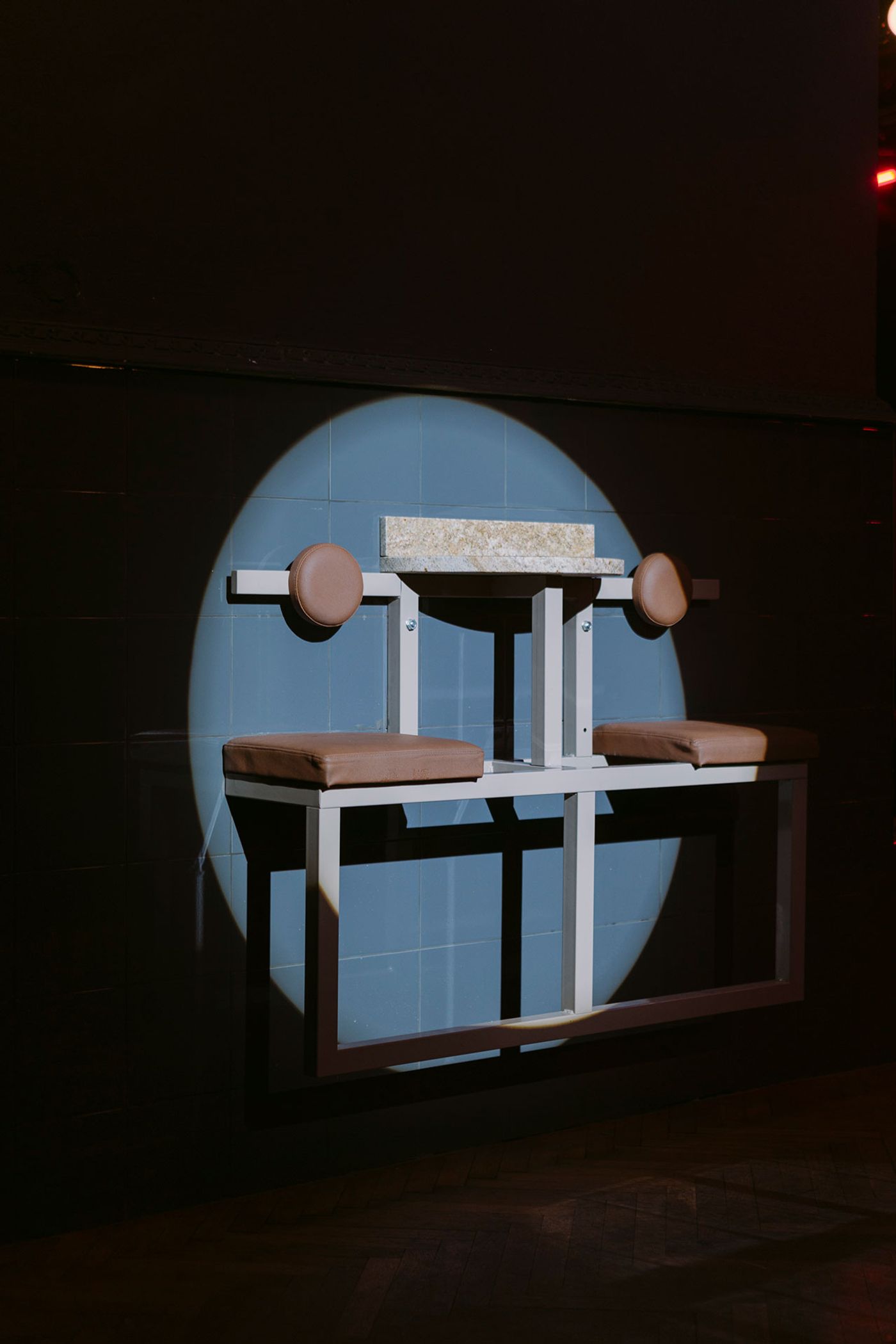
Próżność (eng. "Vanity") Club by wiercinski-studio in Poznan, Poland.
Photo © PION Studio (Basia Kuligowska, Przemyslaw Nieciecki).

Próżność (eng. "Vanity") Club by wiercinski-studio in Poznan, Poland.
Photo © PION Studio (Basia Kuligowska, Przemyslaw Nieciecki).

